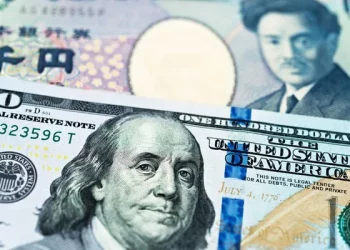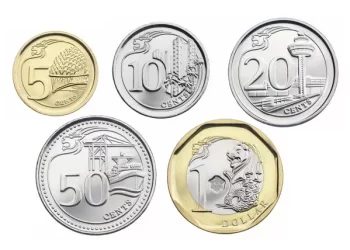The Great British Pound (GBP), colloquially known as the “pound sterling,” stands as one of the world’s oldest and most influential currencies. With a history spanning over a millennium, GBP has retained its status as the official currency of the United Kingdom (UK), including England, Scotland, Wales, and Northern Ireland, as well as several British Overseas Territories. As of 2024, it ranks fourth in global foreign exchange reserves and third in daily trading volume, accounting for approximately 12% of all forex transactions according to the Bank for International Settlements. The pound’s resilience stems from the UK’s robust financial infrastructure—centered around London, the world’s largest foreign exchange trading hub—and its role in international trade. Notable symbols include “£” for banknotes and “GBP” in currency codes (ISO 4217). Each pound is divided into 100 pence, represented by “p.” Understanding GBP requires analyzing its historical evolution, economic determinants, and geopolitical impacts.
Historical Evolution: From Silver Ingots to Modern Fiat
Origins in Anglo-Saxon England
The term “sterling” originated from the Old English steorra, meaning “star,” referencing the silver pennies minted by King Offa of Mercia in the 8th century. These coins featured a star-like pattern, establishing the link between precious metals and currency value. By the 12th century, the “pound sterling” denoted a weight of 240 silver pennies, equivalent to one troy pound (373 grams).
Gold Standard and Imperial Dominance
In 1816, the UK adopted the gold standard, fixing £1 at 113 grains of pure gold. This system stabilized exchange rates during the Pax Britannica era, enabling the pound to become the world’s reserve currency. The Bank of England‘s role as a central bank solidified GBP’s international standing, with colonies pegging their currencies to the pound.
Post-War Transition and Floating Exchange Rates
After World War II, the Bretton Woods system tied GBP to the US dollar, which was convertible to gold. However, economic pressures led to devaluations in 1949 and 1967. In 1971, the UK decimalized its currency, replacing pre-decimal coins. The abandonment of the gold standard in 1973 marked GBP’s shift to a floating exchange rate regime, subject to market forces.
A Cornerstone of International Finance
Reserve Currency Status
Despite the US dollar’s dominance, GBP remains a key reserve currency, held by central banks worldwide. Its stability and the UK’s rule of law attract institutional investors. The Bank of England’s independence in setting monetary policy further bolsters confidence in GBP.
Role in Forex Markets
GBP is a major component of currency pairs such as GBP/USD (“cable”), GBP/EUR, and GBP/JPY. The “cable” nickname originated from the transatlantic telegraph cable used to transmit exchange rates in the 19th century. These pairs account for significant trading volume, especially during London and New York market overlaps.
Influence on Commodity Pricing
As the UK is a net importer of commodities like oil and gas, GBP fluctuations impact import costs. A weaker pound raises inflationary pressures, while a stronger pound benefits consumers but may harm exporters.
Economic and Geopolitical Drivers
Monetary Policy by the Bank of England
Interest Rates: The Monetary Policy Committee (MPC) sets the Bank Rate. Higher rates attract foreign capital seeking yield, strengthening GBP.
Quantitative Easing (QE): Asset purchases increase money supply, potentially devaluing GBP. The MPC’s QE programs during the 2008 financial crisis and COVID-19 pandemic significantly impacted currency flows.
Macroeconomic Indicators
Expansions in sectors like finance, services, and manufacturing boost GBP. The Office for National Statistics (ONS) releases quarterly GDP data.
The Consumer Price Index (CPI) targets 2%. Deviations prompt policy adjustments. For example, Brexit-induced supply chain disruptions pushed UK inflation above 10% in 2022.
Geopolitical Events
Brexit: The UK’s 2020 departure from the European Union created volatility. Uncertainty over trade agreements and regulatory divergence weakened GBP initially, though subsequent stability returned.
General Elections: Political transitions, such as the 2016 Conservative Party leadership change, can sway market sentiment.
Banknotes, Coins, and Fintech
Physical Currency Design
The Bank of England issues polymer banknotes featuring historical figures
Coins range from 1p to £2, with the latter featuring the Royal Shield. Counterfeiting risks have declined with polymer technology, which incorporates holograms and see-through windows.
Digital Transformation
Banking Apps: Major UK banks like Barclays and HSBC offer mobile payment solutions. Faster Payments Service (FPS) enables real-time transactions.
Cryptocurrency Integration: While GBP remains dominant, regulatory sandboxes explore blockchain applications. For example, the Bank of England researches a Central Bank Digital Currency (CBDC).
GBP Volatility and Crisis Management
1992 ERM Crisis (“Black Wednesday”)
The UK’s attempt to peg GBP to the European Exchange Rate Mechanism (ERM) failed due to speculative attacks. On September 16, 1992, the Bank of England spent £27 billion defending the exchange rate before withdrawing from the ERM. This event underscored the challenges of fixed exchange rates.
COVID-19 Pandemic Response
The Bank of England cut rates to 0.1% and expanded QE to £895 billion. Despite initial depreciation, GBP recovered as vaccination rollouts and economic reopenings restored confidence.
GBP vs Other Major Currencies
GBP vs USD
The GBP/USD pair is one of the most traded globally. Historically, GBP has been more volatile than the USD due to the UK’s smaller economy relative to the US. However, the pound’s strength can emerge during periods of US economic uncertainty, as seen during the 2008 financial crisis when GBP briefly outperformed. Interest rate differentials and US Federal Reserve policies also heavily influence this pair.
GBP vs EUR
As the UK’s largest trading partner is the European Union, GBP/EUR dynamics reflect trade relations and regulatory alignment. Pre-Brexit, GBP typically traded at a premium to EUR, but the referendum result led to a sustained depreciation. Since then, factors like EU fiscal policies and UK-EU trade deals continue to shape this exchange rate.
GBP vs JPY
GBP/JPY is known for its high volatility, driven by differences in interest rates, risk appetite, and economic cycles between the UK and Japan. When global investors seek safety, the Japanese yen strengthens, often causing GBP/JPY to decline. Conversely, periods of economic optimism can boost the pound against the yen.
Conclusion
The Great British Pound’s longevity reflects the UK’s economic resilience and financial innovation. While facing challenges—including Brexit adjustments and global competition—GBP maintains its status through institutional strength and market liquidity. As the UK navigates digital transformation and geopolitical shifts, GBP’s role will likely adapt rather than diminish. Central bank policies, economic fundamentals, and geopolitical stability will remain critical determinants of its value. For investors, businesses, and policymakers, monitoring GBP dynamics provides insights into global economic trends.
Related topics


























